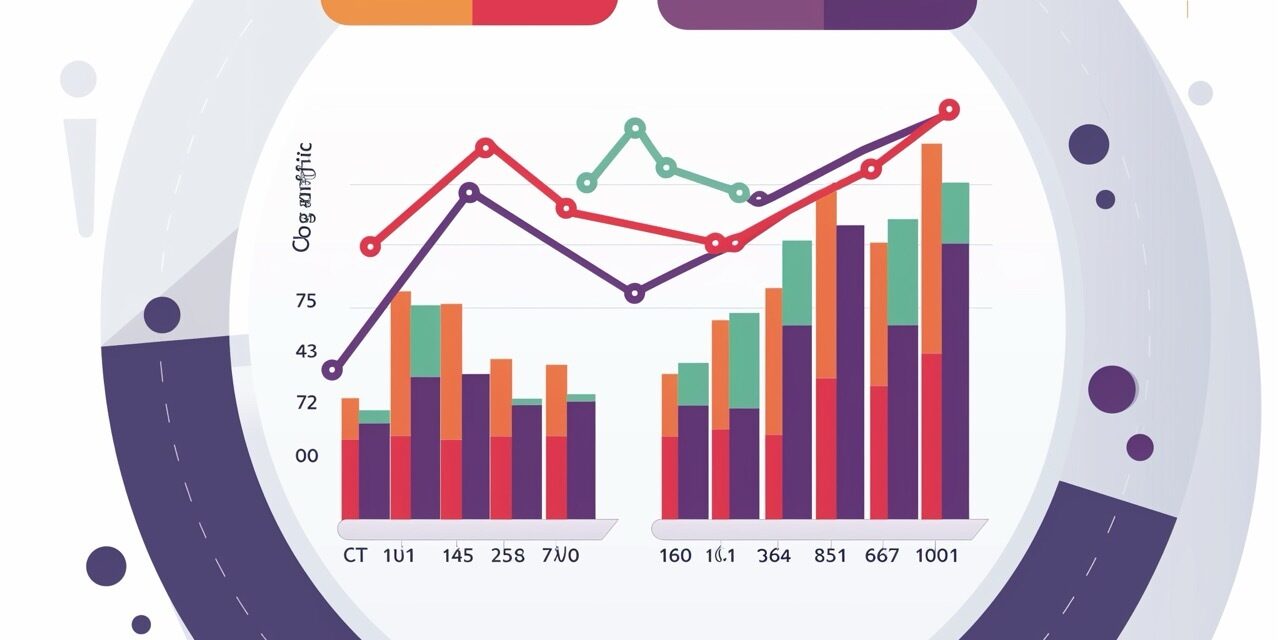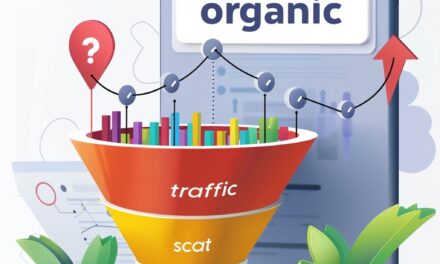Why is click-through rate important? In the fast-paced digital marketing world, understanding how your ads and online content perform is crucial. Whether you’re a seasoned marketer or just getting started, knowing what makes people click can significantly impact your success. This article explores why click-through rate is important, breaking down how it impacts different digital marketing aspects and what you can do to improve yours.
Why is click-through rate important for Google Ads, social media campaigns, and email marketing? Let’s find out.
Understanding Click-Through Rate (CTR)
Click-through rate (CTR) is the percentage of people that click on your link from the total number of people who viewed it (also known as impressions). This simple metric serves as a crucial indicator of how effectively your content captures user interest. Essentially, it tells you how enticing your ad, webpage, email subject line, or social media post is in making someone want to learn more.
Shapes and Pages understands CTR
At Shapes and Pages, we understand the importance of Click-Through Rate (CTR) in driving website traffic and conversion. A high CTR indicates that your search placement is relevant to your target audience, increasing the likelihood of conversion and ultimately, revenue.
Our team at Shapes and Pages is dedicated to improving CTR for our clients. We achieve this by:
- Conducting thorough research to identify the most relevant keywords for your market
- Developing a customized keyword strategy each month to ensure optimal content performance
-
We
write compelling
content that promotes good ranking and provides visitors with useful information - Monitoring results during the month with metrics and reporting
- Noting any adjustments necessary and incorporating them into the next months keyword strategy
Let us help you boost your CTR and take your business to the next level!
Calculating Click-Through Rate (CTR)
You don’t need to be a math whiz to figure out your CTR. It’s a simple calculation that involves dividing the number of clicks your content receives by the number of impressions it gets and then multiplying the result by 100. Here’s the formula for clarity: CTR = (Total Clicks / Total Impressions) x 100
Let’s say your Google ad received 1,000 impressions, and 20 people clicked on it. You’d plug the numbers into the formula like this: (20 Clicks / 1,000 Impressions) x 100 = 2% CTR
Click-Through Rates Across Different Marketing Channels
While the general concept of CTR remains constant across different platforms, a good click-through rate varies depending on the platform and campaign format. For example, display ads generally have much lower average click-through rates than search ads. This is because search ads appear when someone is actively looking for information related to specific keywords.
Because those searching already have an intent, they are more inclined to click if your ad seems relevant. This generally translates to higher click-through rates. Directive Consulting’s recent analysis of Google AdWords found that the average CTR for a search ad is 1.91%, compared to 0.35% for a display ad.
In contrast, display ads are visual ads that show up on various websites while someone browses. In this case, someone might not necessarily be looking for what your ad offers at that specific moment. Because of this general lack of immediate purchase intent, display ads often see lower click-through rates compared to search ads. However, you can make display ads more effective with compelling visuals and ad copy.
For email marketing, according to a study by Campaign Monitor, the average click-through rate of emails across all industries is 2.6%. This means that for every 100 people who open your email, around 2-3 will click on one of the links inside. Email campaigns give you a chance to connect more deeply with your subscribers, personalize the content to specific segments, and use storytelling techniques that drive conversions.
As with Google search ads, social media posts benefit from people’s existing interests in a given topic or subject. People go to specific social media pages or communities for information or entertainment. This leads to higher organic CTR rates compared to display ads where users don’t have pre-existing purchase intent. It’s crucial to craft your social media posts with your target audience in mind, using relevant hashtags and engaging visuals to capture their attention. A study by Wordstream shows that average social media CTR generally hovers between 0.7% to 1.6%.
Why Click-Through Rate Is Important
Now, you might wonder, so what if my ads get clicks or not? What difference does CTR really make for my marketing campaign? Why is click-through rate important in the grand scheme of my advertising efforts?
Turns out, CTR plays a pivotal role in achieving both your short-term and long-term marketing goals. While it might seem like a tiny detail, click-through rate acts like a gauge that measures how well your digital marketing strategies resonate with your target audience. By understanding CTR, you gain valuable insights into what works and what doesn’t, allowing you to optimize your campaigns for better results.
CTR Indicates Relevancy
Think about your behavior as an Internet user for a minute. You only click on ads, links, or search results that grab your attention and pique your interest, right? As with most human behaviors, if users click on your link, then this signals their interests.
By looking at CTR, we are gauging our content’s relevancy with our intended audiences. Whether you’re running paid Google Ads or just crafting an enticing organic search snippet, CTR offers a valuable metric by helping marketers track engagement and optimize performance. A high CTR indicates that your message is resonating with the right people, while a low CTR suggests the need for adjustments to your targeting or messaging.
A Higher CTR Often Translates To More Traffic
While your content might not get 10 million clicks overnight, a good click-through rate suggests that your content, including your keywords, are engaging and relevant to the audience. When your content drives a healthy number of clicks, search engines take notice, ranking it higher on search engine result pages (SERP), sending even more traffic your way. With the first organic search result on Google accounting for almost a third of all clicks, getting yours ranked at the top can send lots of high-intent traffic to your content.
You want to optimize all elements of your online presence including search results snippets, social media post headers, and paid advertisement copies to get those clicks. A well-crafted meta description that accurately reflects the content of your page and the keywords you’re targeting can significantly increase CTR and drive more organic traffic.
A Higher CTR Leads to Higher Conversion Rates
Why is click-through rate important when it comes to converting customers and driving business revenue? It’s because a good CTR signals that you’re attracting the right audience – the type more likely to make a purchase or take your desired action, boosting conversion rates in the process. After all, getting someone to click on a Google search ad, organic result snippet, social media post or even a call to action on a website landing page is only the first step. What matters more is converting clicks to customers.
According to WordStream, doubling CTR typically increases conversion rates by as much as 50%. But you can’t stop at getting a high CTR – your business goals and ROI take priority when optimizing your marketing efforts. A compelling search ad title or engaging call to action are useless if they ultimately lead to a low-performing landing page or ineffective conversion process.
Google Quality Score and Ad Rank
A better CTR can lead to higher ad rank which translates to lower cost-per-clicks (CPC). It does so by improving the quality score of the ad. Quality score is essentially a system Google uses to measure the overall quality and relevance of paid search advertisements, as well as landing pages and keywords. You can view and track the Quality score of each ad and ad campaign to get more insight into their overall performance.
While there are several other important aspects to achieving high quality scores on Google AdWords, including landing page experience and keyword relevancy, Google places great emphasis on how well your ads appeal to your target audience, looking closely at CTR as one of the major signals of effectiveness and relevance. A high-quality landing page that provides a seamless user experience can contribute to a better CTR and lower bounce rates.
This is important because the better the Quality Score, the better your ads are perceived, driving up the ad rank and in turn saving on costs. A low click-through rate might be a signal that your ad copies are too broad, attracting the wrong audience. By refining your targeting and crafting more compelling ad copy, you can improve your CTR and attract a more qualified audience.
CTR’s Impact on Search Engine Rankings (SERPs)
For organic search listings (those appearing in search engines like Google based on quality scores, content, backlinks, keywords and a host of other website elements), you may think that you don’t have any influence over what appears or how it looks on the Google results page (SERP). While this might be true in some sense, think of an online search result in much the same way you might an online social media post – someone’s got to create the title and imagery for that search engine result that encourages users to click.
So it goes with the snippets that appear below website urls on a search result – getting a good click-through rate in organic searches sends a positive signal to search engine algorithms. A low CTR, even on high ranking results, indicates poor relevancy or quality, slowly pushing your rankings lower. According to research by WordStream, for every one position you want to increase your organic CTR by 3%. This makes sense as results ranking first on Google organically already account for nearly one-third of all search result clicks. A good search engine ranking that has a low CTR, is telling search engines that users don’t find the content they’re expecting based on the header and snippet text on the page result. By optimizing your title tags and meta descriptions, you can entice users to click on your listing, thereby improving your CTR and signaling to search engines that your content is relevant and valuable.
Optimizing for Click-Through Rate
Why is click-through rate important, and how can you improve it? Here are a few areas you can consider when working on the click-through rate for different marketing materials:
Email Marketing Strategies to Improve CTR
Focus on creating subject lines that make your target audience stop their scrolling and actually want to open your email. Consider personalization using information like a customer’s name or previous purchase history to get your email open.
Create a consistent sending schedule to let subscribers know when to expect your next campaign. According to research by Nielsen Norman Group, the majority of Internet users scan an email subject and title first to decide if the rest is worth reading, so spend time creating headlines and snippets that generate interest. The body copy of your email marketing campaign should use a clear and inviting layout and calls to action to guide recipients.
SEO Strategies To Increase Click-Through Rates
Creating compelling and keyword-optimized titles and meta descriptions is an important first step in getting those organic search result clicks. Just remember not to write clickbait titles – search engine crawlers are intelligent, constantly monitoring and evaluating user behavior when interacting with online content. By analyzing the search terms your target audience uses, you can optimize your titles and meta descriptions to better align with their search intent.
Focus on using header tags that give relevant context and content quality to both human and machine readers, guiding visitors as they make their way through the content. Well-structured content with clear headings and subheadings not only improves readability but also makes it easier for search engines to understand the context of your page, potentially leading to higher rankings.
If you are having difficulty deciding where to start, try performing an audit of top ranking website pages. Start with those that are ranking higher than your content and analyze all the elements, including their titles, snippets, keyword relevancy, backlink quantity and quality, and general site navigation experience. For every one position that you increase in Google’s SERP, you’ll want to increase your organic CTR by 3 percent. Tools like Google Search Console can provide valuable data on your average CTR for different keywords, allowing you to identify areas for improvement.
Google and Social Media Advertising Tips For Increasing CTR
Start by identifying a target audience and testing out ad copy with variations. Research effective calls-to-action that encourage clicks. Analyze what is working on high performing websites, borrowing tips and ideas. The use of dynamic keywords that Google dynamically matches to specific user searches also helps to generate a higher CTR by using the user’s specific search words in the advertising title.
Research shows that images attract and resonate with users, particularly on social media platforms, helping to get that initial click. Also, with Instagram becoming an essential component in most Influencer Marketing campaigns, high click through rates and engagement is important for the social media platform to push the content higher, expanding reach to broader audiences. As you gather more information and data, consider using A/B testing to compare performance of variations, whether on a website landing page, social media platform or Google advertisement. Google noted that Extra Space Storage saw a 113% CTR increase simply by running different test copies against one another.
Why is click through rate important
Why is click-through rate important for marketing success? In an age where consumers are overwhelmed with advertising and information, standing out in a sea of competition has never been harder. CTR has a direct impact on every single digital marketing effort including SEO ranking, Google Quality scores, Social media engagement and email campaign efficacy. By understanding what CTR is, why it matters, and how to improve it, you can create more effective marketing campaigns that resonate with your target audience and drive tangible results.
Shapes and Pages will Boost your CTR
Shapes and Pages keyword services can significantly improve your Google search click-through rate (CTR). By optimizing your website’s structure and content, we help search engines understand your brand’s value proposition, increasing the likelihood of higher quality users clicking on your search results. This is crucial in today’s competitive online landscape, where a higher CTR can be the difference between success and obscurity.
A higher CTR translates to more website traffic, increased brand visibility, and ultimately, higher conversion rates. By leveraging Shapes and Pages’ expertise, you can drive more qualified leads to your site, boost sales, and grow your online presence.
How do Shapes and Pages achieve this?
Our team of experts employs a range of strategies to optimize your website’s structure and content, including:
Keyword research and analysis: Identifying the most relevant and high-traffic keywords for your business.
Content optimization: Crafting compelling, keyword-rich content that resonates with your target audience.
Technical optimization: Ensuring your website’s technical infrastructure is search engine-friendly, including page speed, mobile responsiveness, and XML sitemaps.
Local SEO: Optimizing your website for local search, including Google My Business and online directories.
FAQs About Why Click Through Rate Important
Why is CTR important for my business?
“A higher CTR can increase website traffic, boost conversions, and ultimately, drive revenue growth.” – SEO Expert
How does CTR impact my search engine rankings?
A higher CTR sends positive signals to search engines, indicating that your website is relevant and useful to users. This can improve your search engine rankings, driving even more traffic to your site.
Can I improve my CTR on my own?
While it’s possible to improve your CTR without expert help, partnering with a professional service like Shapes and Pages can yield faster, more significant results. Our team has the expertise and resources to optimize your website for maximum CTR.
What does click-through rate tell you?
Click-through rate tells you how relevant and engaging your content is for the targeted audience and market. The higher the click-through rate (CTR), the better. A higher CTR on an advertisement copy compared to similar ones indicates greater relevancy. A low CTR might suggest that your targeting is off or that your content isn’t resonating with your intended audience.
What is the importance of CTR and how do you calculate it?
A good CTR generally means lower advertising costs and improved rankings both in Google paid search listings, as well as organically on Search Engine Result Pages. Higher CTR on content signals greater audience interest and a higher Quality Score, pushing you higher on a Google search. To calculate the click-through rate, take the number of clicks an ad or web page received and divide it by the number of impressions it has. For instance, a PPC ad viewed 100 times, that had 3 clicks on it would have a CTR of 3%.
Is it better to have a high click-through rate?
In most cases yes, especially if those clicking on your content are your target market and result in business revenue or sales. Higher CTR indicates stronger content that is more likely to result in the conversion or outcome you’re trying to achieve. It is therefore important to monitor which variations of your content, including advertisement copies, SEO header and description snippets or calls to action on a landing page result in a higher CTR, slowly learning and improving through testing. By continually analyzing your CTR and making data-driven adjustments, you can optimize your campaigns for maximum impact.
Is a 7% click-through rate good?
With average CTRs of Facebook Ads being at 0.9% in 2024, then a click-through rate of 7% would be extremely high and generally considered good. While a 7% click-through rate in most digital advertising would be high, for paid Google Ads on Search Networks, this wouldn’t necessarily be as amazing with some Google Ads on specific search queries resulting in a 10.67% CTR in recent years. This variation is what makes optimizing for a high CTR so tricky – it’s very contextual. A general best practice is to compare CTRs between competing ad copy and identify why one performs better than another. By understanding the factors that contribute to a high CTR in your specific industry and niche, you can set realistic goals and track your progress over time.
Contact Shapes and Pages now to learn how we can boost your CTR




